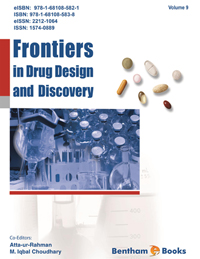Abstract
Airway diseases associated with inflammation and airway obstruction are known for an accumulation of inflammatory blood cells in the lung tissue and airways and for a typical inflammatory symptomatology. An increased leak of inflammatory cells into the target tissue and their activation prolong the survival of pro-inflammatory cells. The complex cell interactions in the airways play an important role in the development of chronic inflammation, e.g. in bronchial asthma (BA). The inflammation in BA is directed by the activation of Th2 lymphocytes that produce various inflammatory cytokines (interleukins IL-4, IL-13, and IL-5), eotaxin etc. In chronic obstructive pulmonary disease (COPD), an involvement of alveolar macrophages and neutrophils with the release of IL-8, neutrophil elastase, tumor necrosis factor (TNF)-α and myeloperoxidase has been confirmed. Currently, 11 families of PDEs are known. In contrast to non-selective PDE inhibitors (e.g. theophylline), selective PDE inhibitors are able to act with a significantly reduced risk of adverse effects. Several groups of selective PDE inhibitors, i.e. PDE3, PDE4, PDE5, and PDE7, exert a possible relationship to immune responses in the airways. The activity of PDE3 in the airways has been confirmed in alveolar macrophages, endothelial cells, platelets and airway smooth muscle. Simultaneous administration of siguazodan (PDE3 inhibitor) and rolipram (PDE4 inhibitor) has led to enhanced relaxing response, suggesting a synergism and potential benefit in parallel inhibition of PDE3 and PDE4. The PDE4 enzyme family is expressed in various inflammatory cells; therefore, its inhibition has shown anti-inflammatory and immunomodulating effects. Rolipram suppresses neutrophil- and eosinophil-mediated inflammation, secretion of interleukins and activation of pro-inflammatory cells. Agents from the second generation of PDE4 inhibitors (e.g. roflumilast approved for clinical use in COPD patients) are able to suppress airway hyperresponsiveness, release of TNF-α, fibrotisation and remodeling of the lung parenchyma. An inhibition of PDE7 can contribute to anti-inflammatory action as its expression has been confirmed in T-cells, epithelial cells, airway and vascular smooth muscle cells, lung fibroblasts, and eosinophils. While their effectiveness in individual administration is relatively weak, the simultaneous PDE4 and PDE7 inhibition seems to be promising. The antiinflammatory activity of dual PDE inhibitors (e.g. PDE3/PDE4, or PDE4/PDE7) has been studied only in COPD conditions, and only in limited extent in allergic BA. An inhibition of PDE5 leads to decreased pulmonary vascular resistance, suppressed pulmonary hypertension and vascular remodeling. Sildenafil (PDE5 inhibitor) inhibits cell proliferation, has pro-apoptotic action, and suppresses the bronchial hyperresponsiveness, infiltration by white blood cells, and concentrations of exhaled NO. These findings suggest the possible benefits of combining the PDE4 and PDE5 inhibitors in the therapy of BA and COPD. There are several studies with roflumilast and cilomilast already conducted in patients with BA; however, there is a lack of relevant data from experimental and clinical studies on simultaneous effects of PDE4 and PDE5, PDE3 and PDE4, and PDE4 and PDE7 up to now. Acute lung injury (ALI) represents another disorder often associated with the inflammatory changes. ALI arises from various reasons: a direct injury to the lungs by aspiration of the gastric content, by aspiration of neonatal meconium, by pneumonia, or by inhalation of toxic gases. In addition, ALI is generated indirectly as a consequence of serious systemic injury, e.g. in sepsis, severe trauma with shock, or pancreatitis. These situations may progress into a more severe form of ALI, acute respiratory distress syndrome (ARDS). Several PDE inhibitors, including non-selective PDE inhibitor aminophylline, have been used in various animal models of ALI/ARDS. In experiments, the selective PDE3, PDE4, and PDE5 inhibitors have demonstrated potent anti-inflammatory, anti-oxidative, anti-edematous and vasodilation effects associated with lower occurrence of side effects than observed with non-selective PDE inhibitors, as their influence is limited to one type of PDE only. However, their use in these disorders is still under research.
Keywords: Phosphodiesterase, Non-Selective PDE Inhibitors, Theophylline, Selective PDE Inhibitors, PDE3, PDE4, PDE5, Olprinone, Roflumilast, Tadalafil, Sildenafil, Bronchial Asthma, Chronic Obstructive Pulmonary Disease, Acute Lung Injury, Meconium Aspiration Syndrome, Therapy.






















